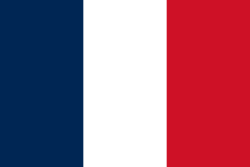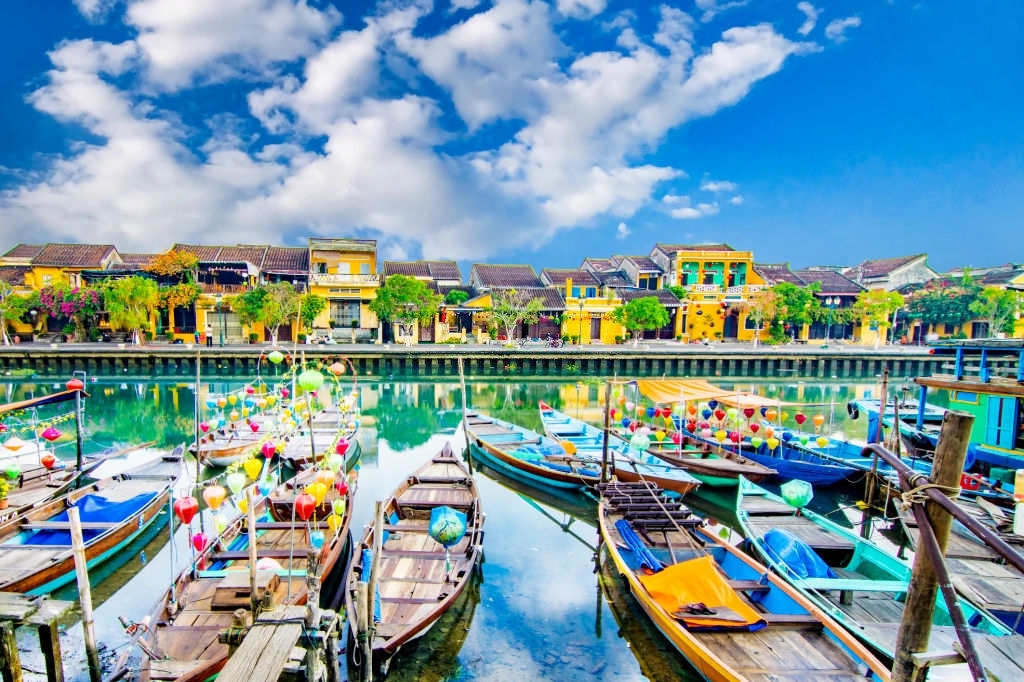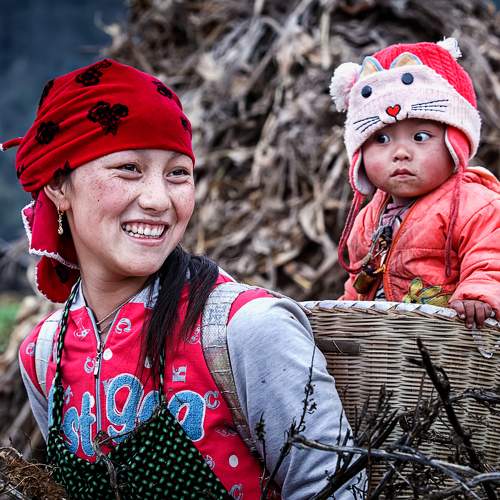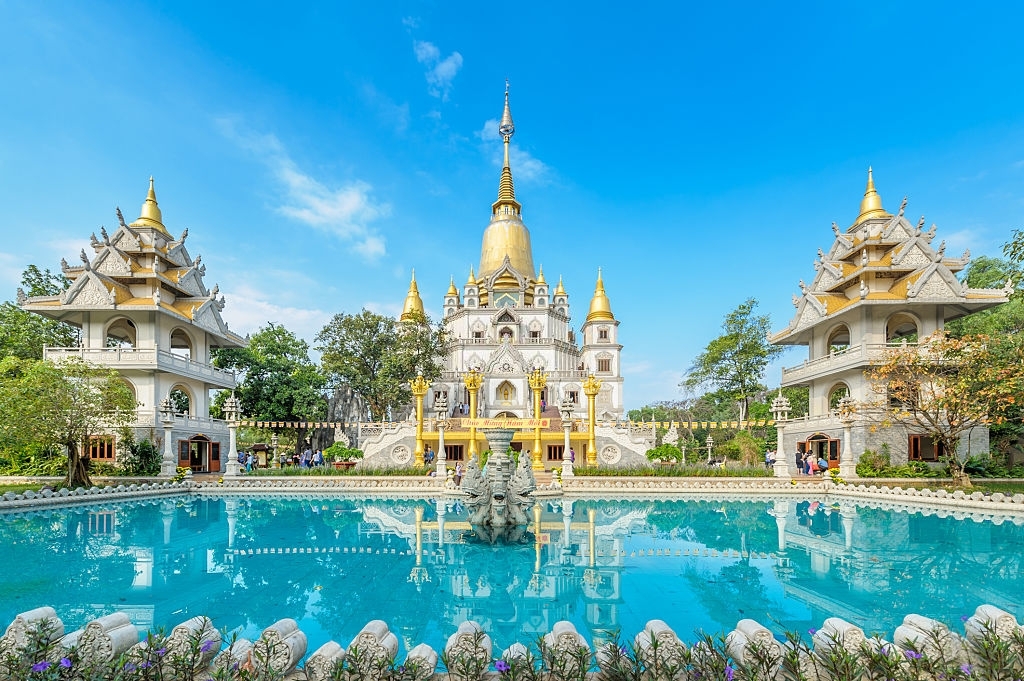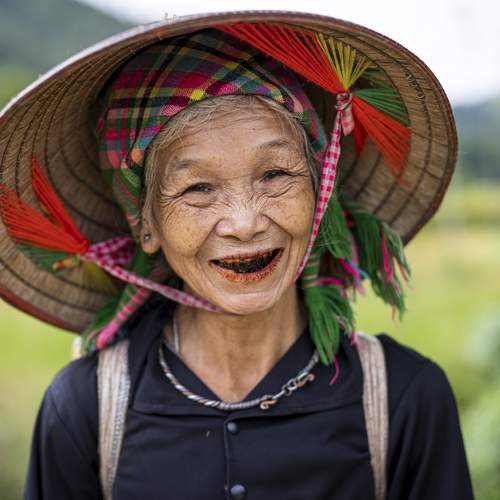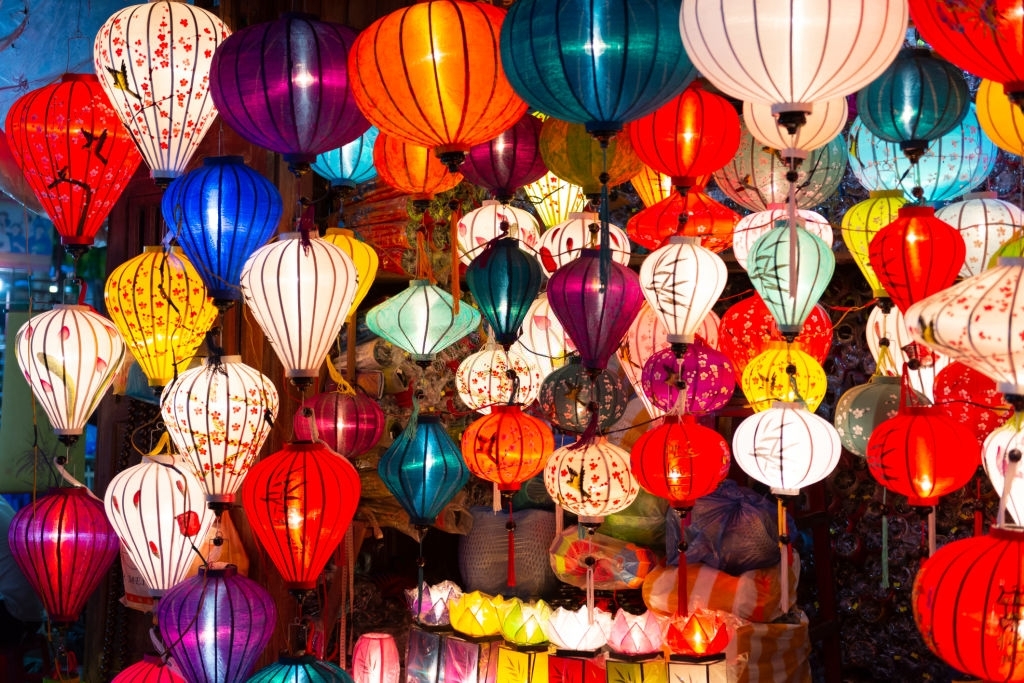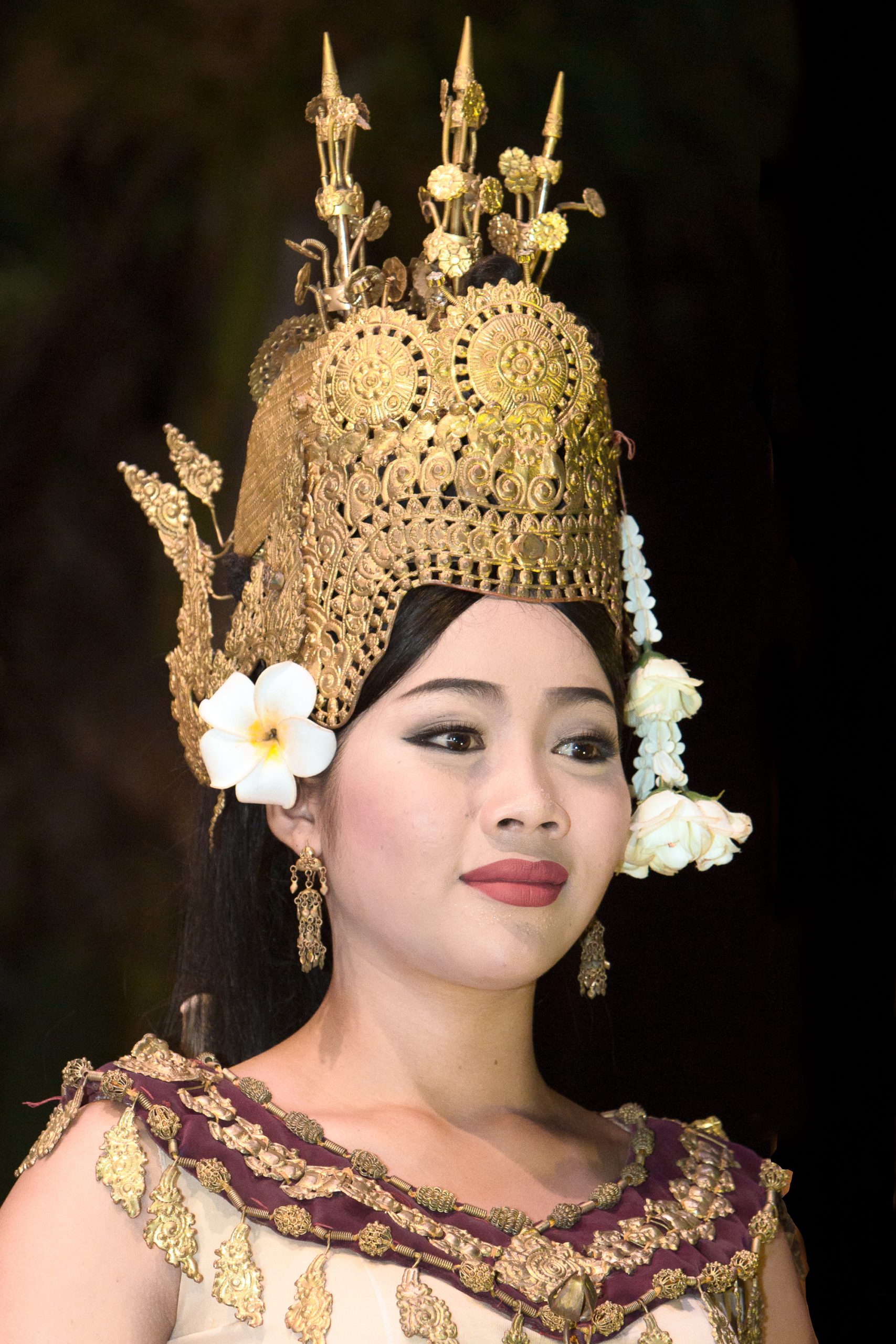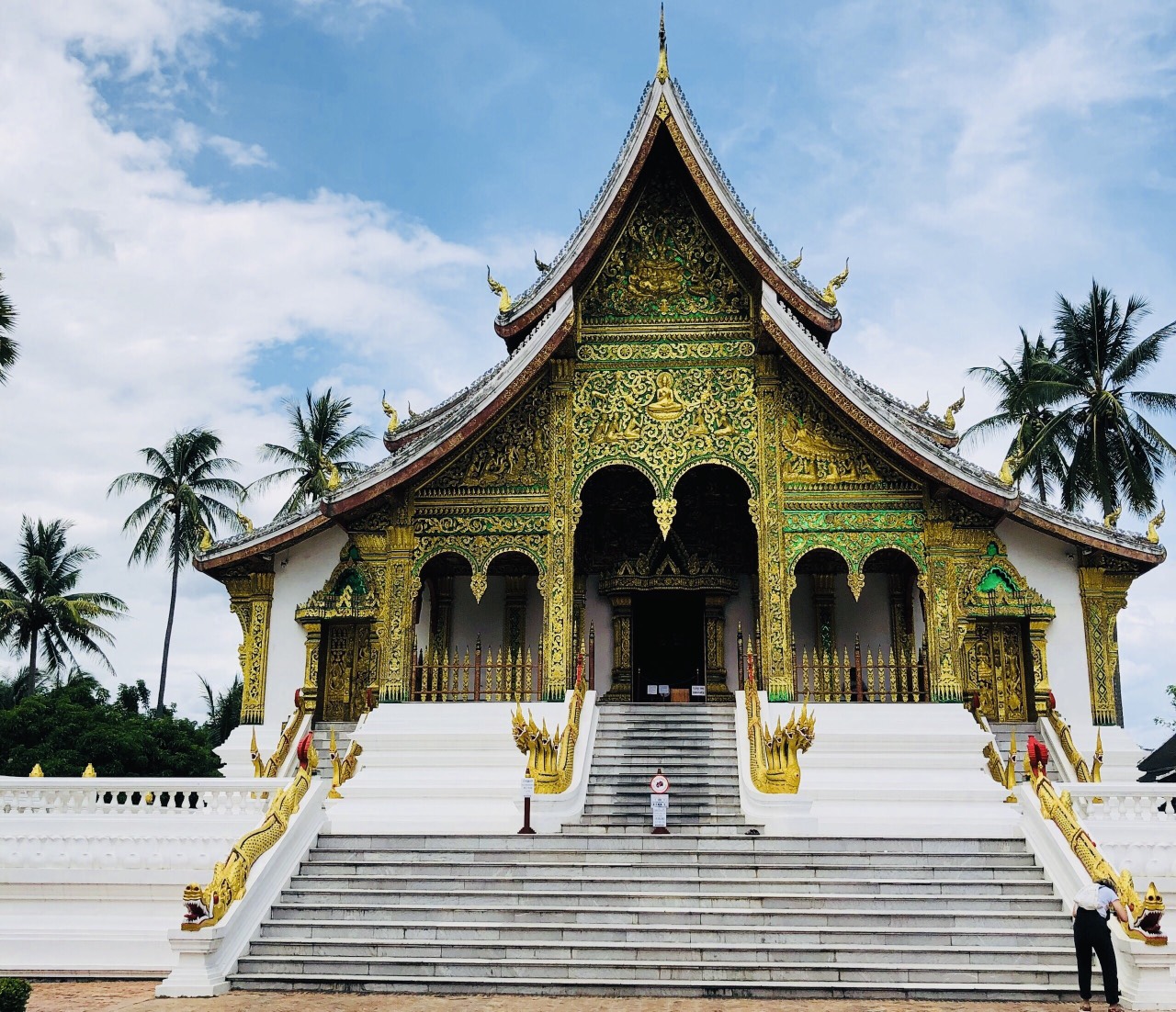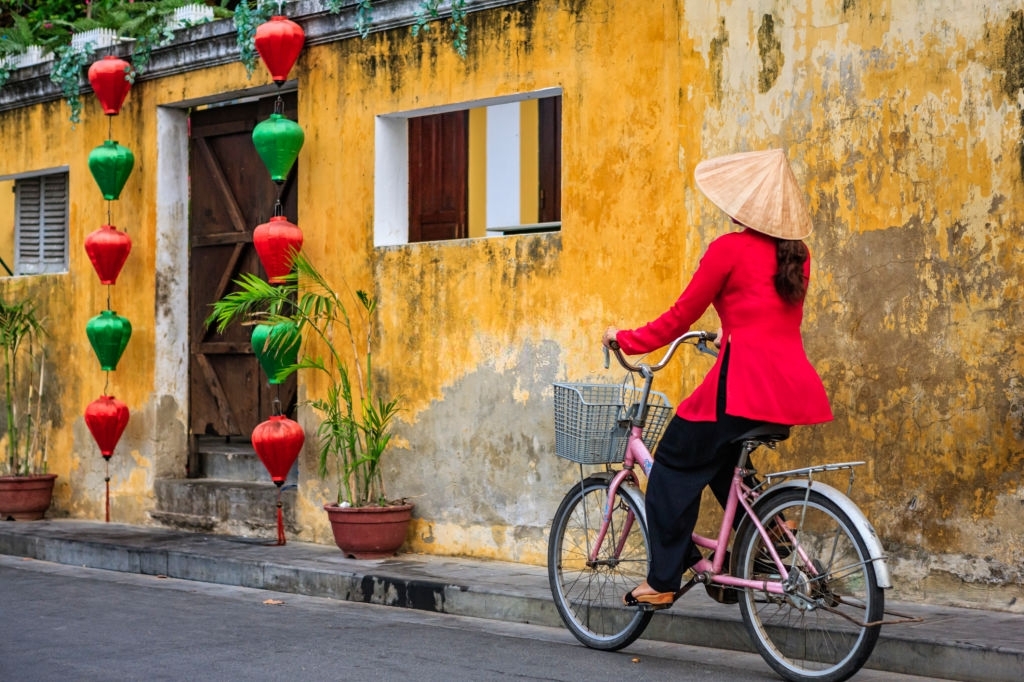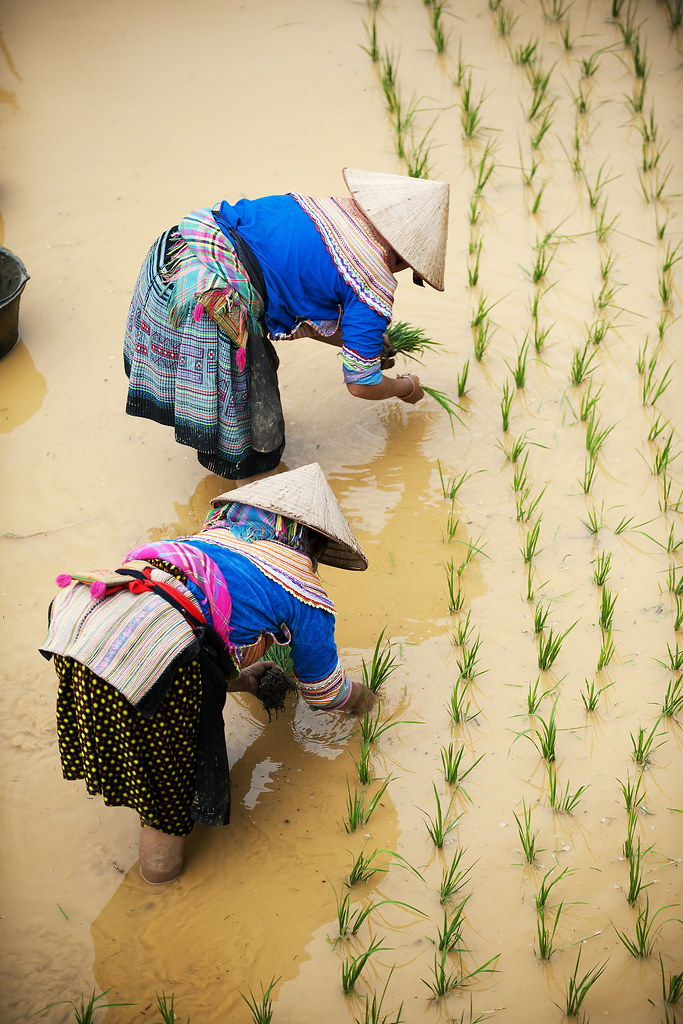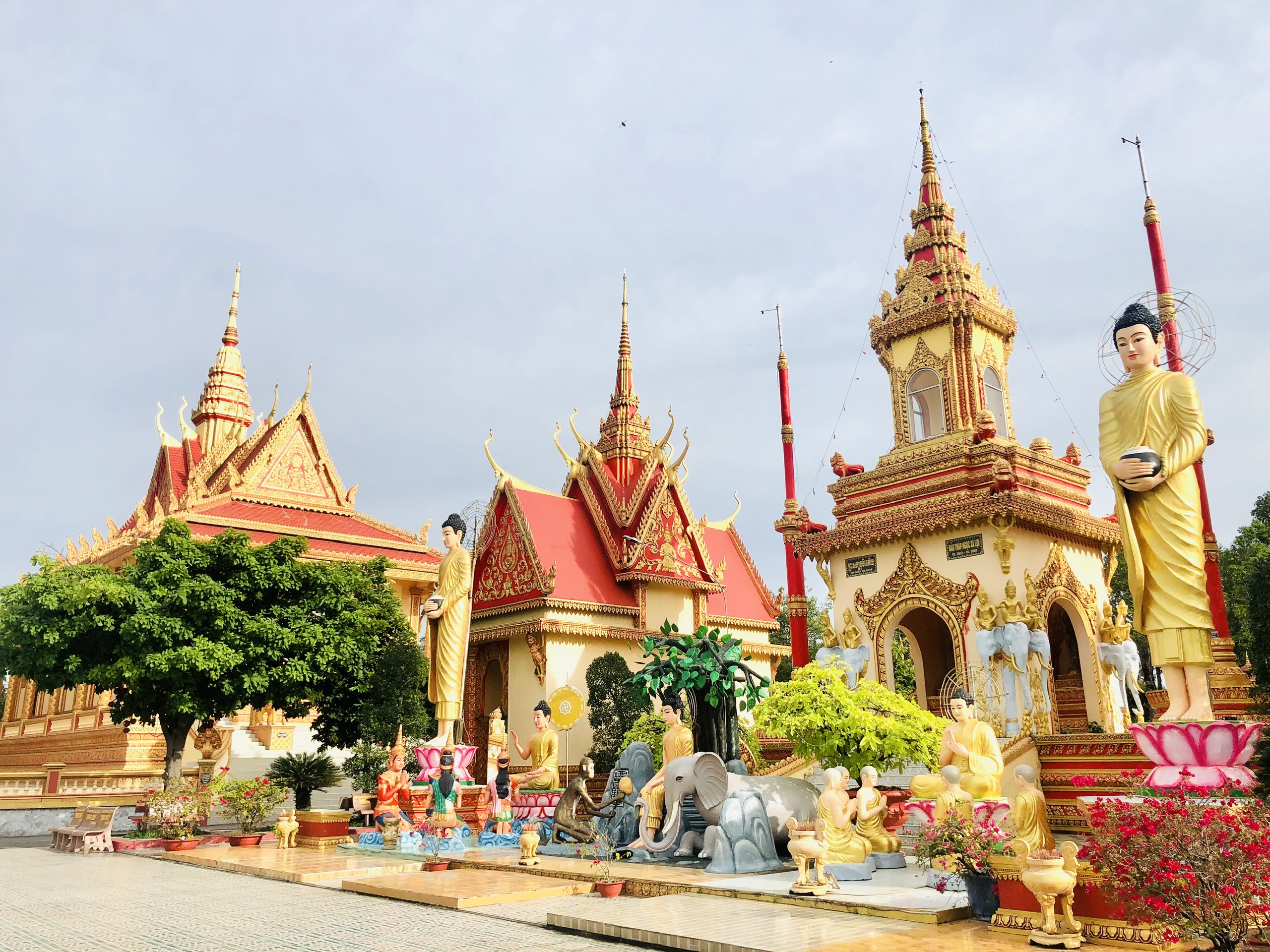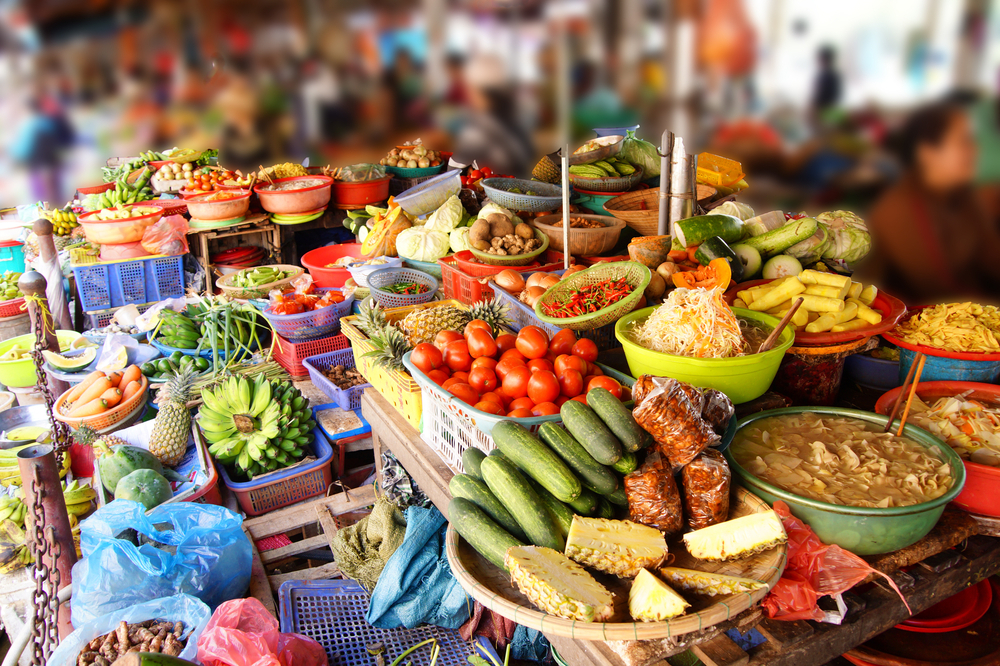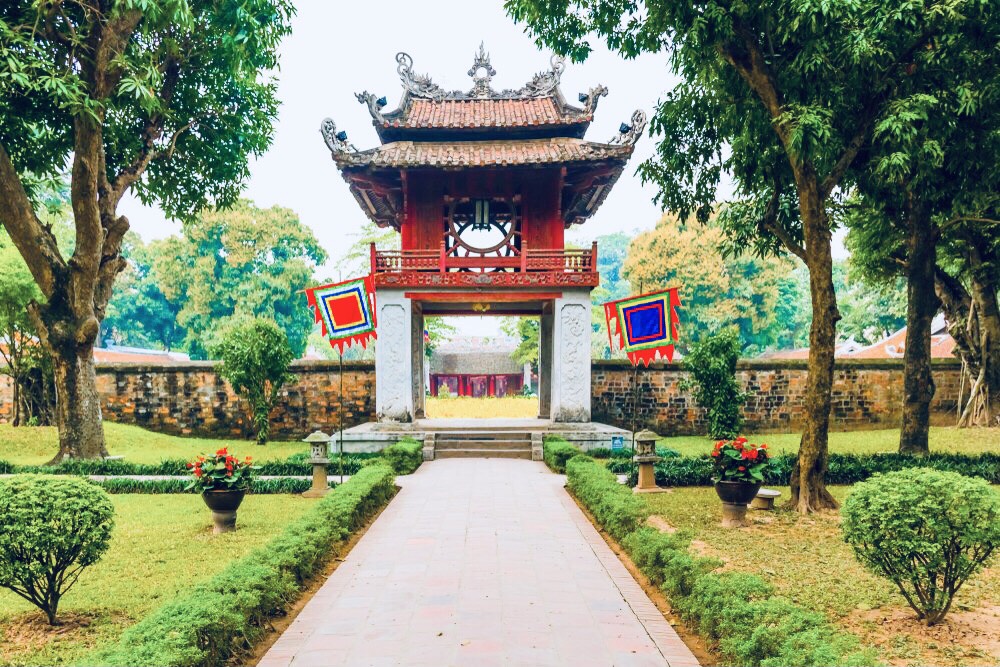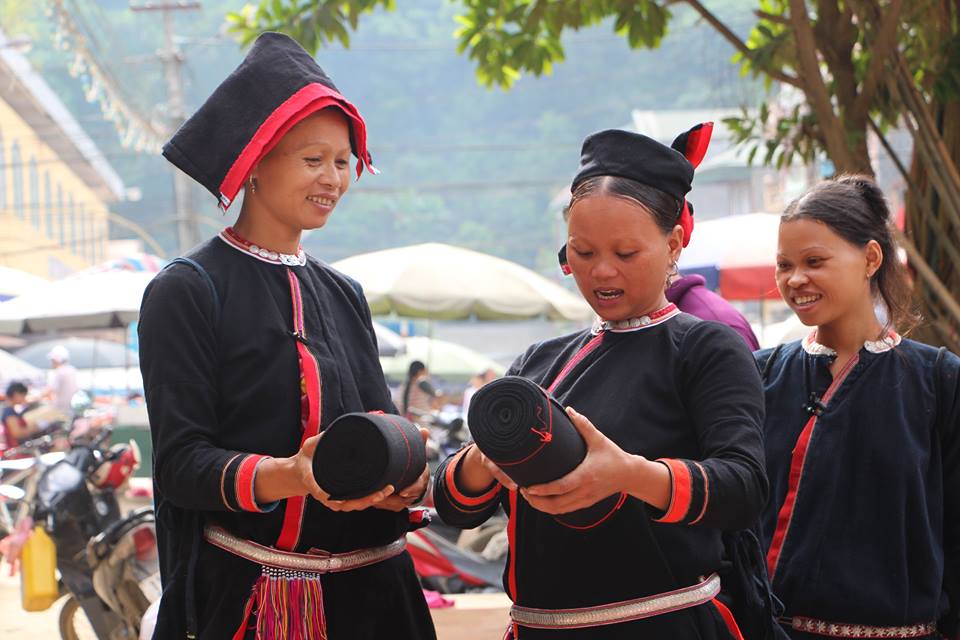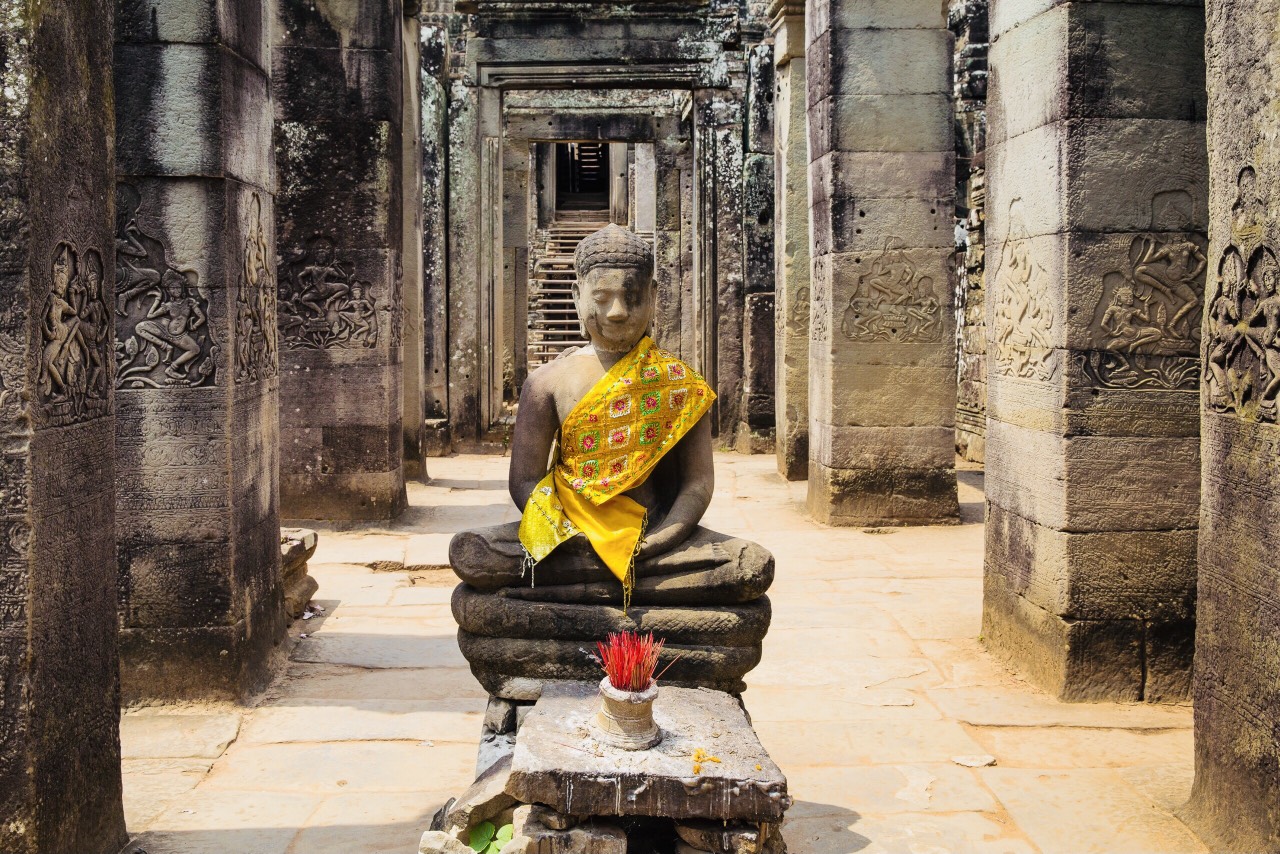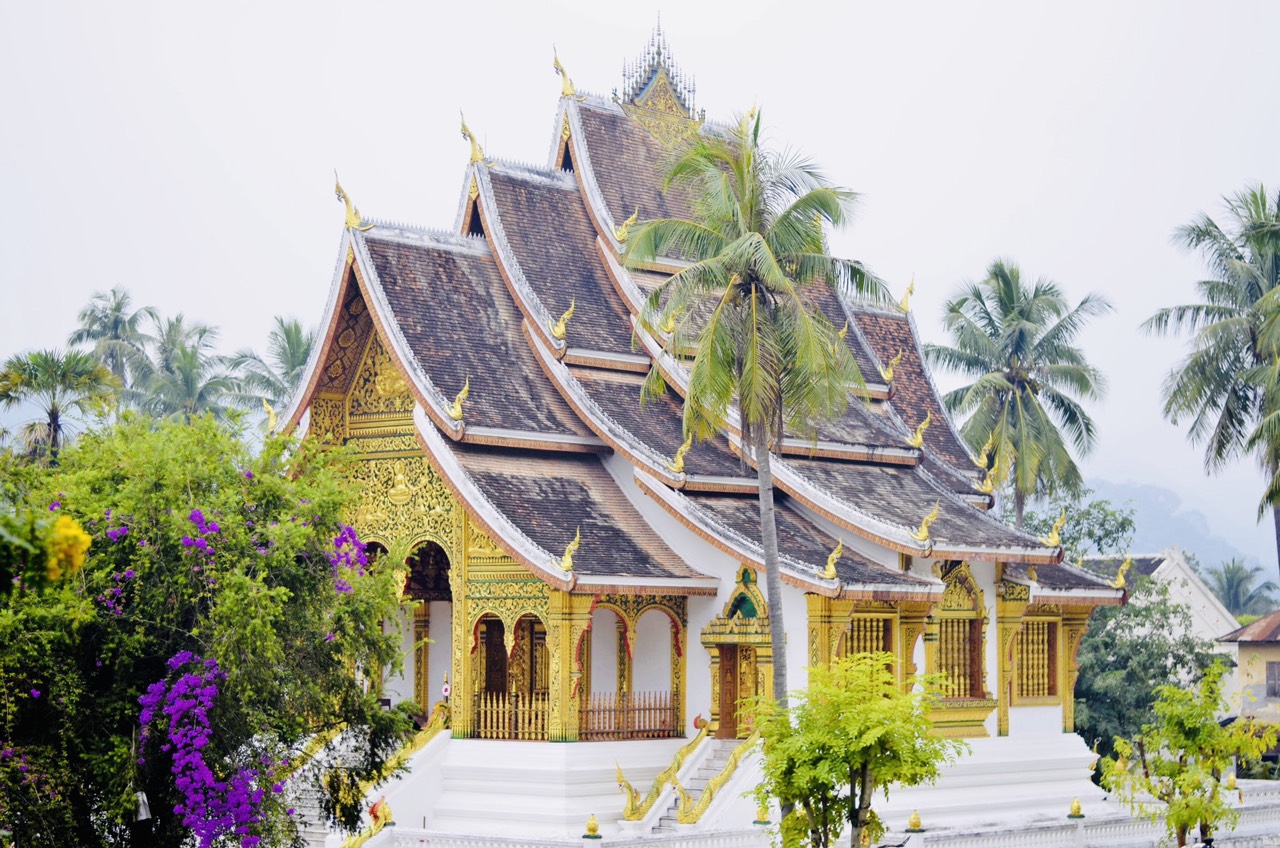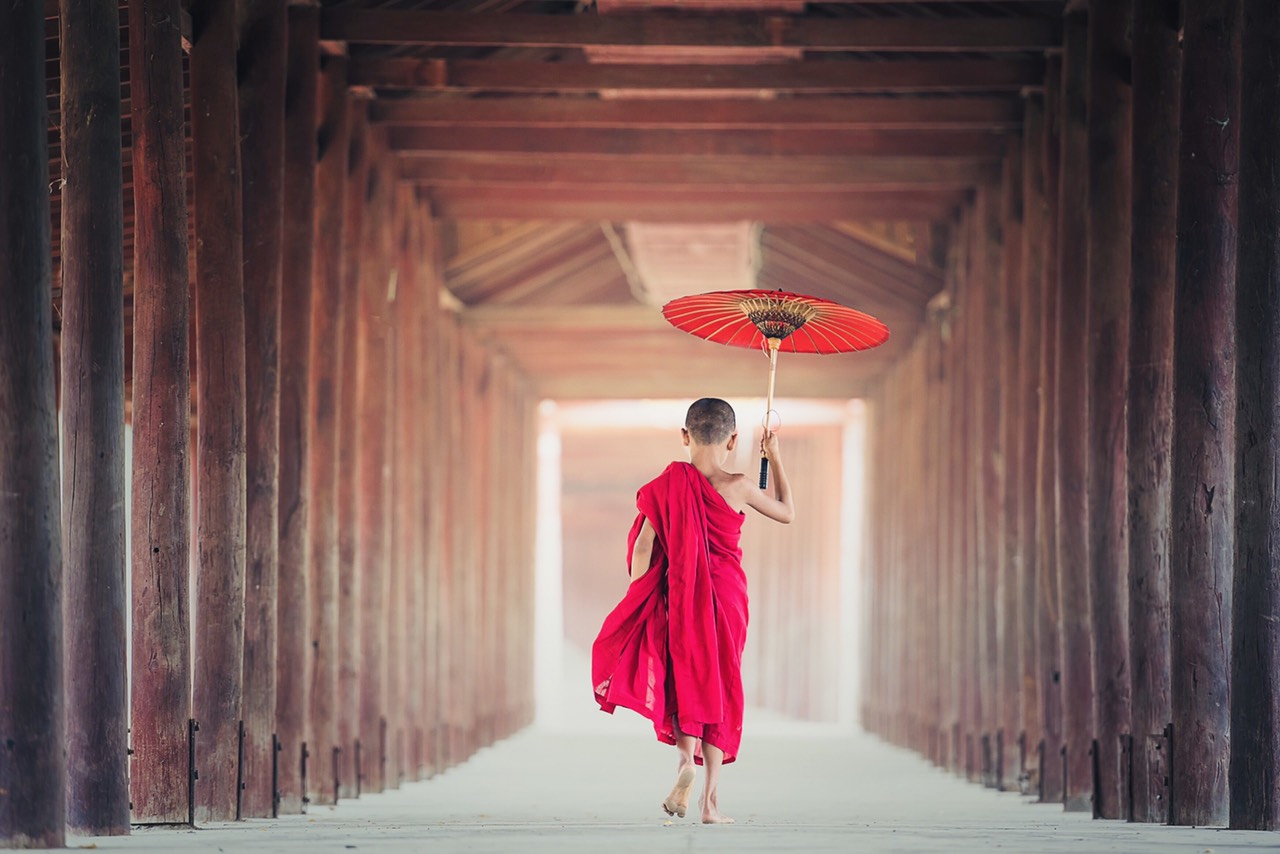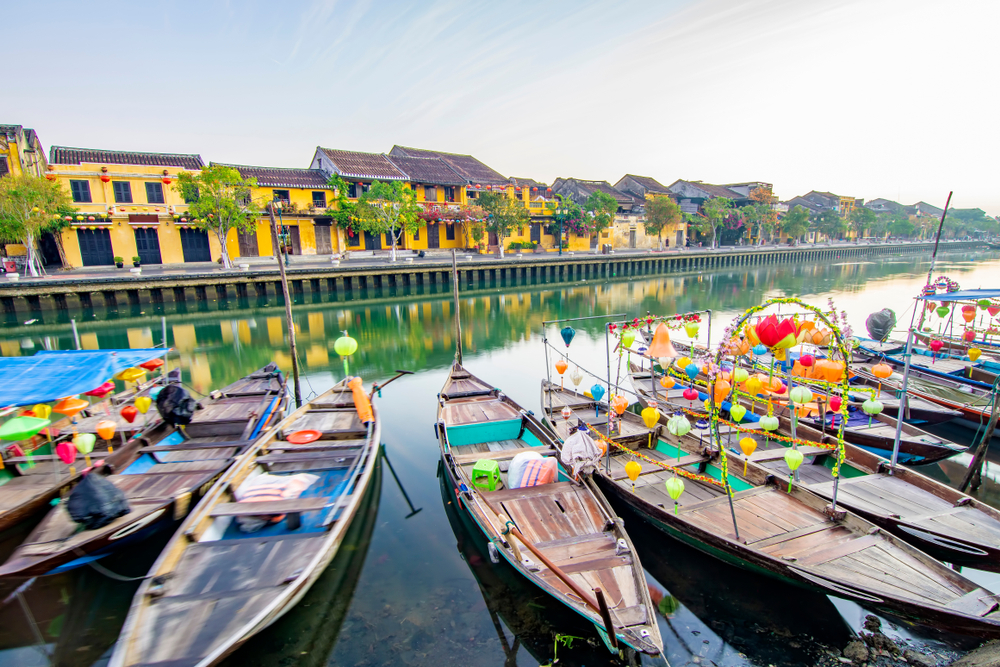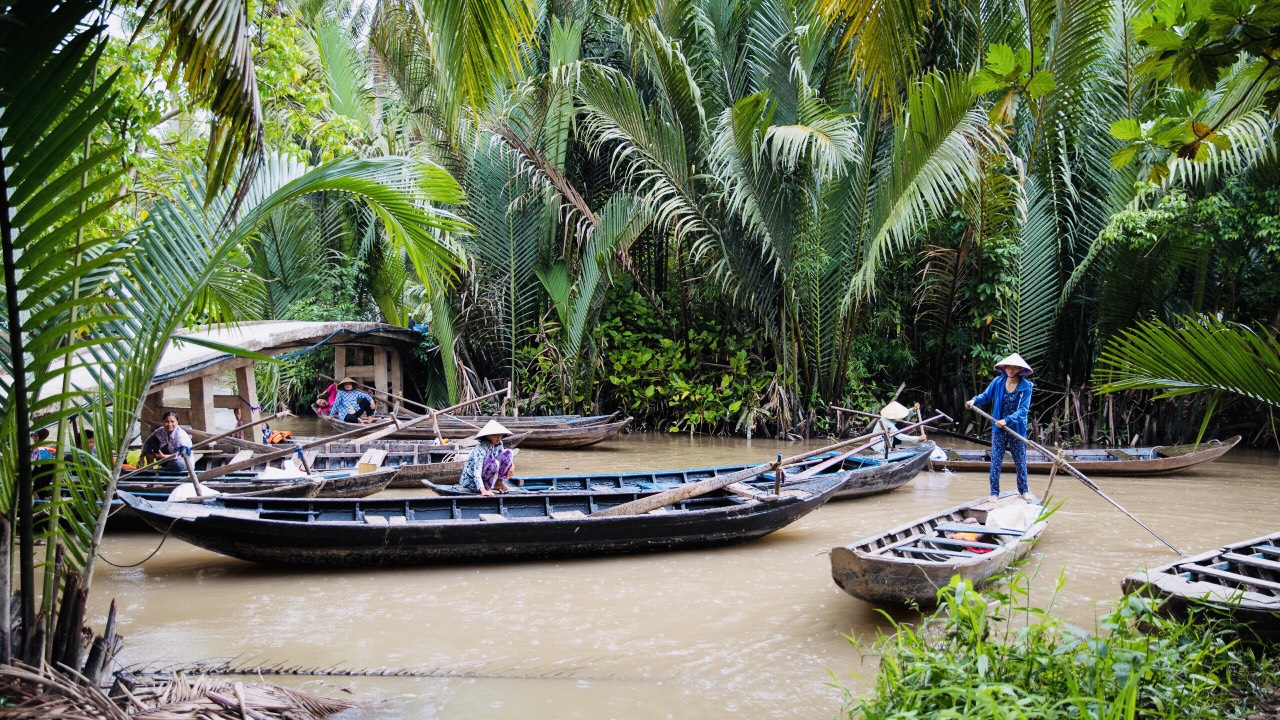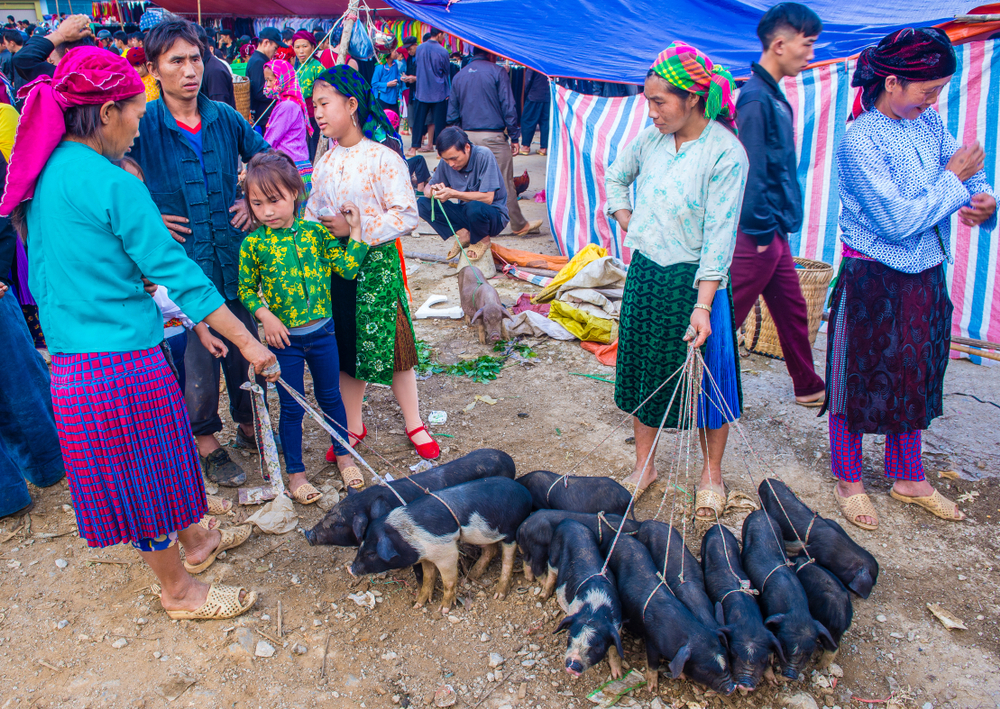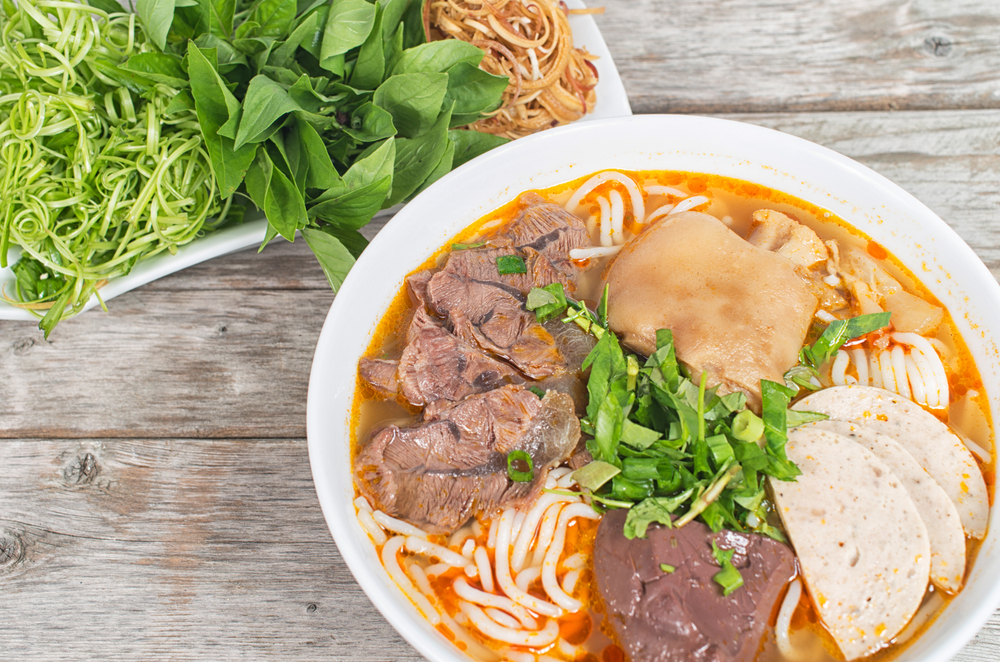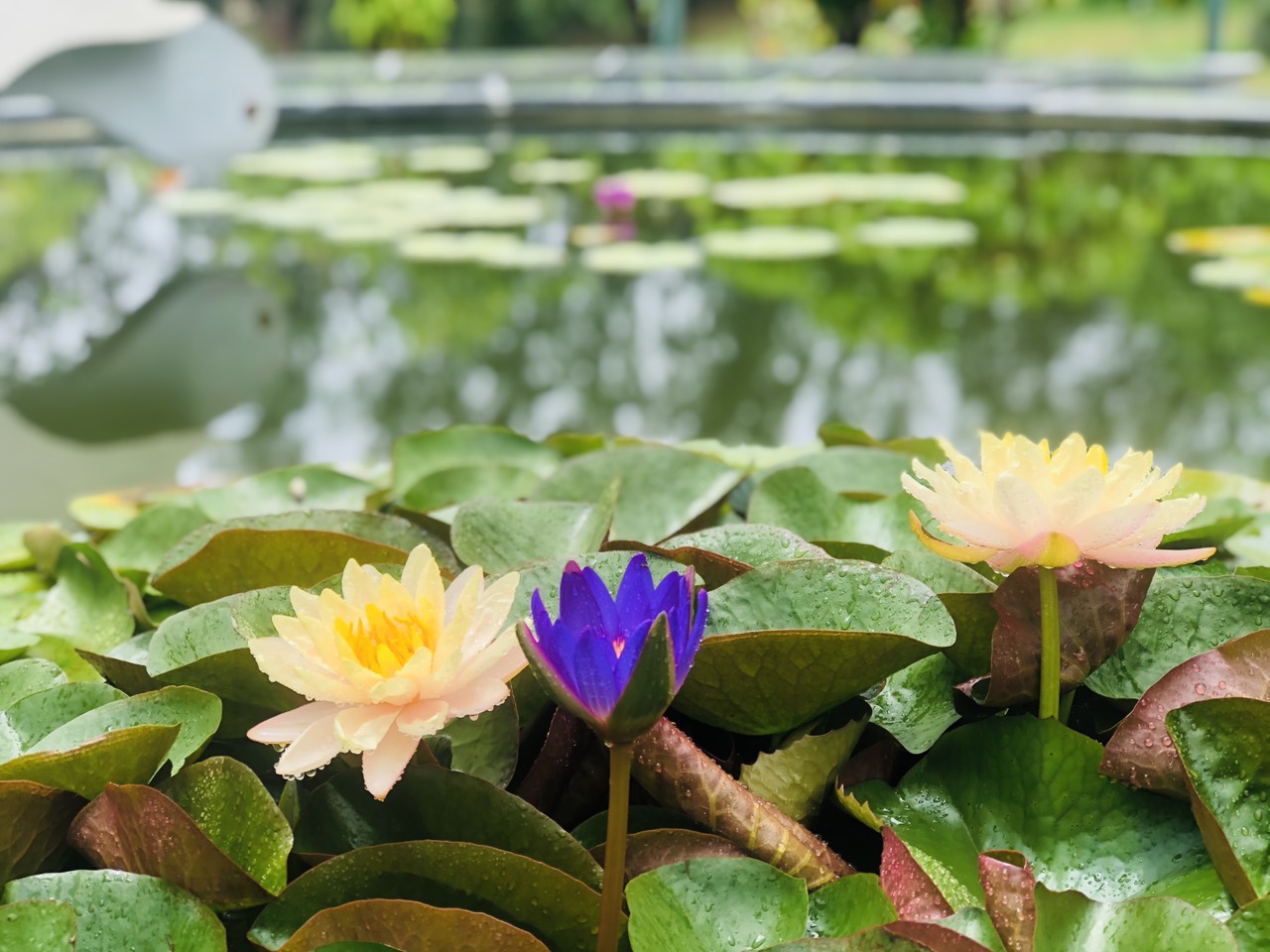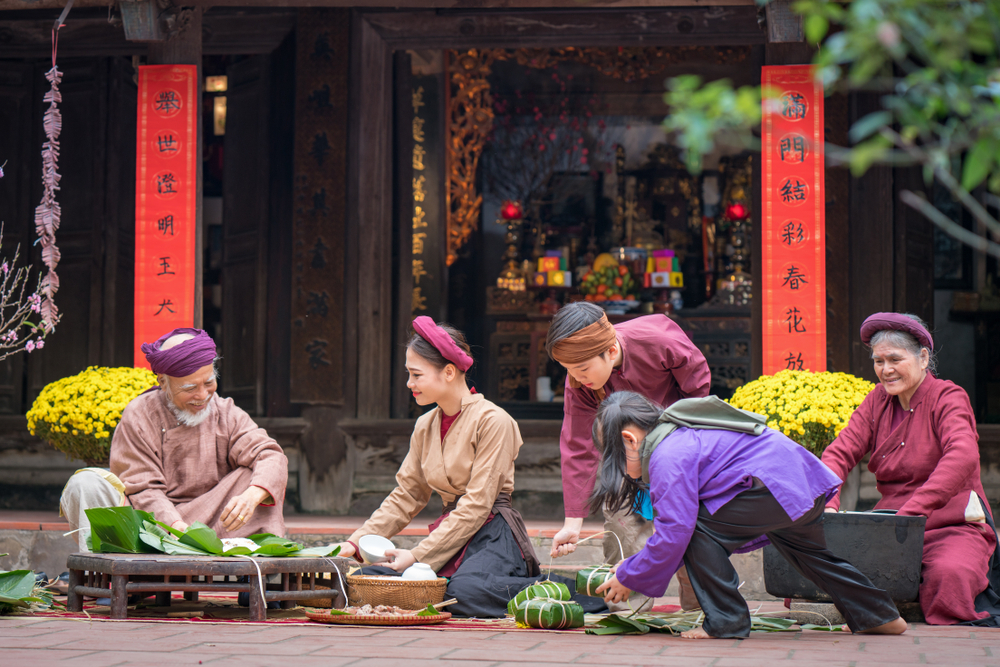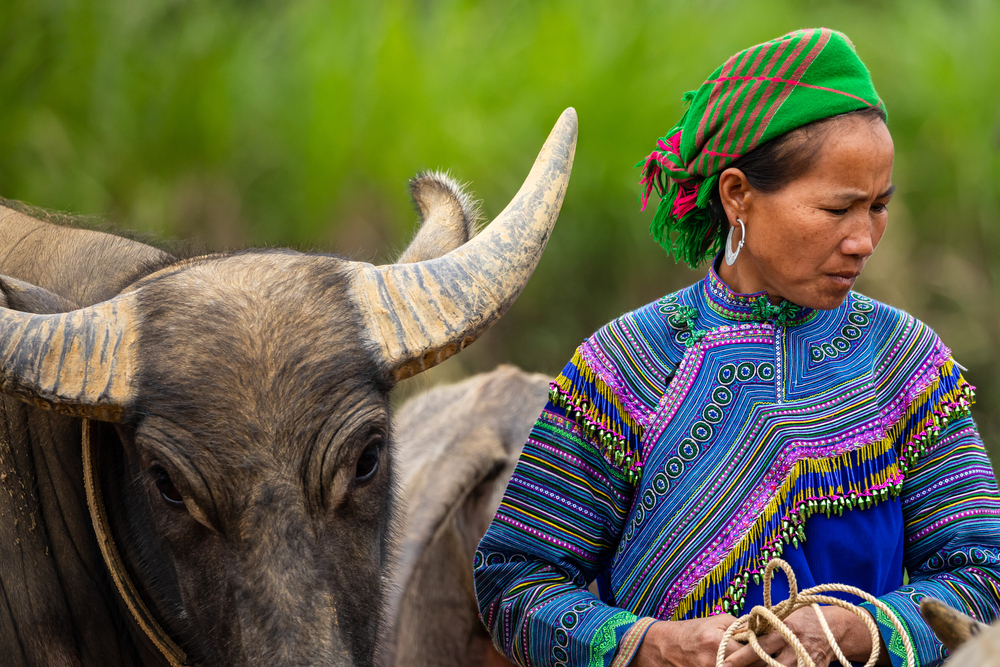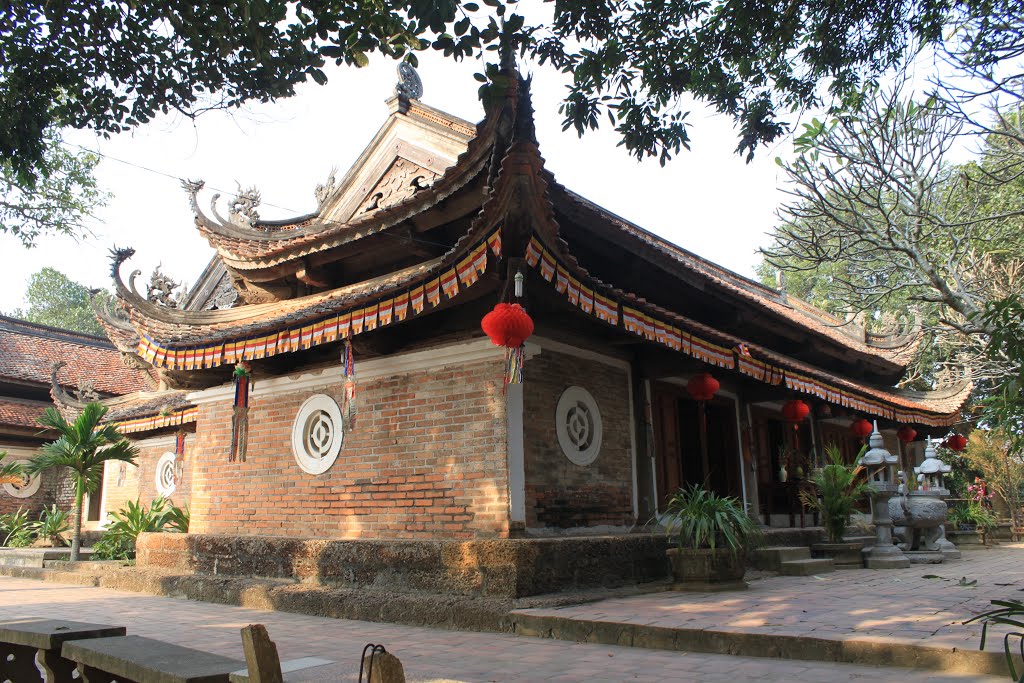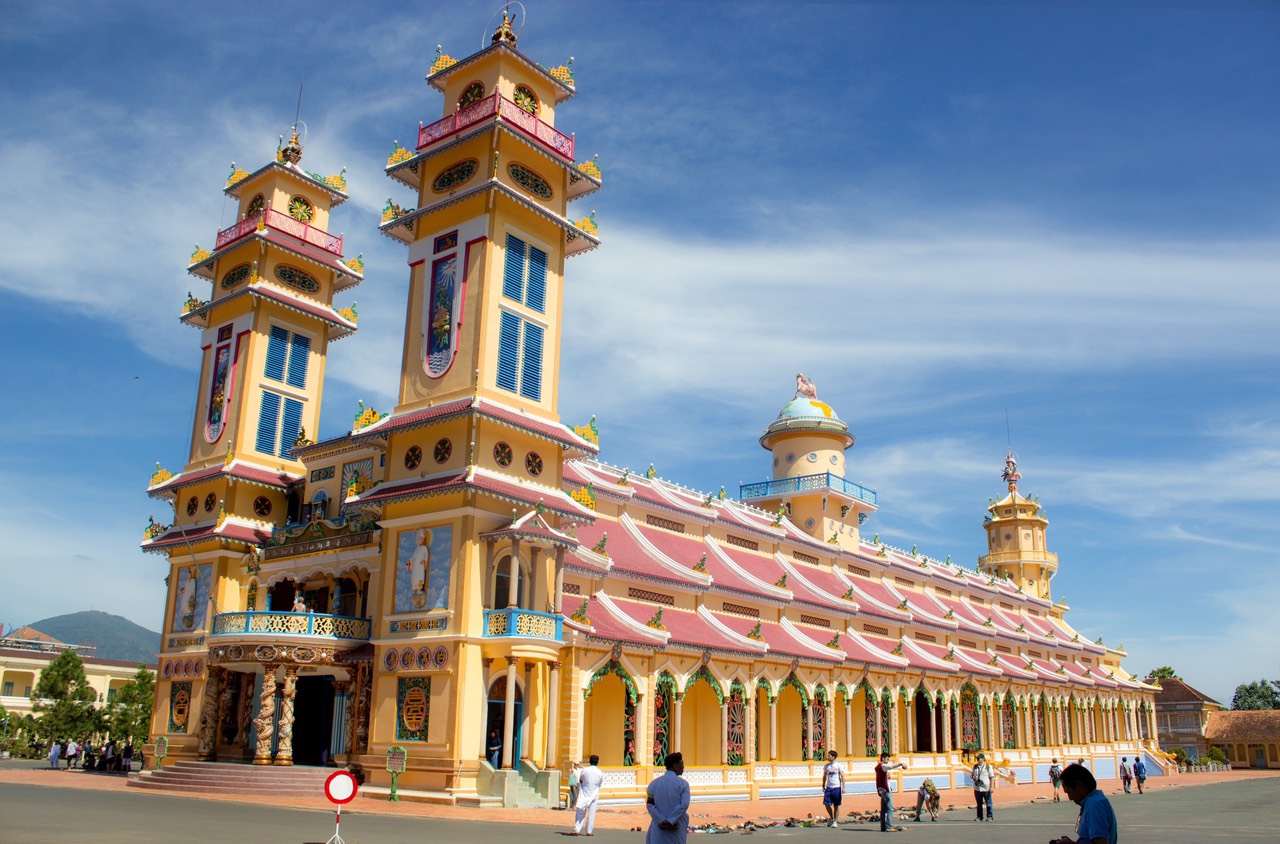
Caodaism and the Cao Dai temple of Tây Ninh
Caodaism or renewed Buddhism, borrows much from :
– Buddhism, particularly the doctrine of reincarnation.
– Taoism, a doctrine of non-action that refuses the fear of failure, voluntary control and seeks harmony with the natural vital power of each individual.
– Confucianism, a way of human development in order to be a good man and live in harmony with his fellow men.
– Christianity, a religion based on the teachings, person and life of Jesus Christ.
It is similar on the other hand:
– Spiritism, a practice that claims that it is possible to communicate with the spirits of the dead through a medium or otherwise.
 Caodaism advocates the practice of good, of virtue, of universal love.
Caodaism advocates the practice of good, of virtue, of universal love.
Caodaism tended to merge these various beliefs in the space of only a few years at the beginning of the 20th century.
It brought about the adhesion of considerable popular masses in Cochinchina and Cambodia.
Ngô Van Chiêu
In the populous district of Binh-tây, west of the vast agglomeration of Sai-gon – Cho-lon, stands a temple dedicated to the cult of Quan-Dê, a Taoist deity.
Around 1880, behind this building, a very modest house sheltered the Ngô family.
It was there that on the 7th day of the first month of the year of the Tiger, Mâu-Dân, (February 28, 1878), a male child was born.
Thus was born Ngô Van Chiêu.
He was three years old when his father died, his mother was materially unable to raise him and entrusted him to their family in My Tho.
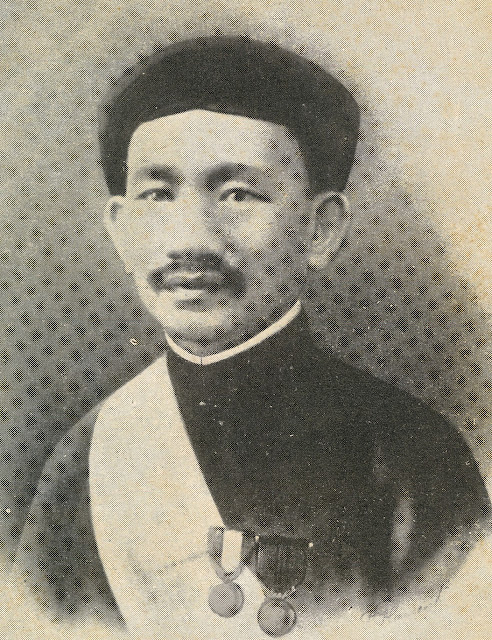
Separated from his family, without much affection, Chiêu led a difficult life, however, like most young Vietnamese, he showed a great desire to learn and manifested a keen intelligence.
A good student, he obtained a scholarship and at the age of 21 he graduated with a diploma of complementary Franco-Indigenous studies, a title that was highly appreciated and very honorable for the time.
He became a civil servant and then the administrative delegate of Phu Quoc Island in 1919.
He was a man who behaved like a wise man, compassionate towards everyone, throughout his life.
From his birth and childhood environment, he inherited a particular veneration for Quan-Dê (the Taoist deity), at home, he set up an altar and worshipped.
He furnished his mind with all this supernatural world with which he will not cease to live.
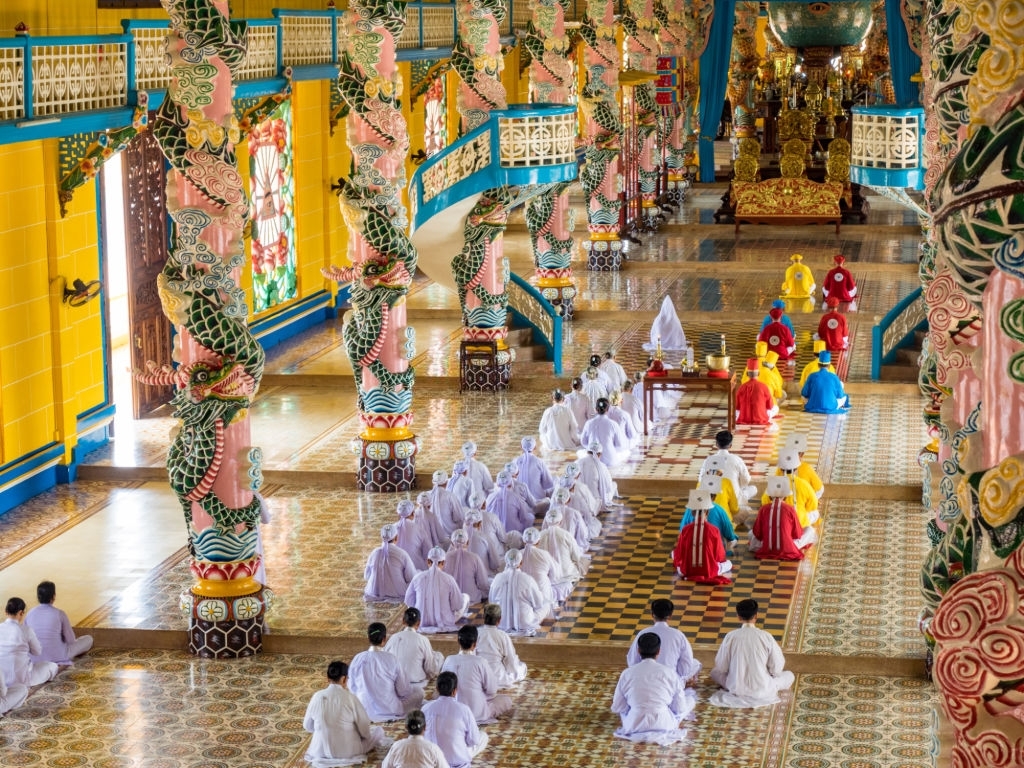
Concerned about the longevity of his mother, he participated in a Taoist cult and questioned the spirits about the future.
It is at the origin of one of these seances, while invoking the superior spirits, that Ngo-Van-Chieu received a vision of the Divine Eye, (which became the symbol of Cao Dai).
This spirit ordered Ngô Van Chiêu to create Caodaism.
– The left eye is the symbol of chân lý cuộc sống (the truth of life), of God’s omnipresence at all times, witnessing all the good or bad acts of his creatures.
On October 7, 1926, the creation of the Caodaism religion was officially announced, a declaration signed by 28 high status disciples and 245 followers was sent to the governor of Cochinchina: Mr. Le Fol.
Caodaism was officially declared in Saigon.
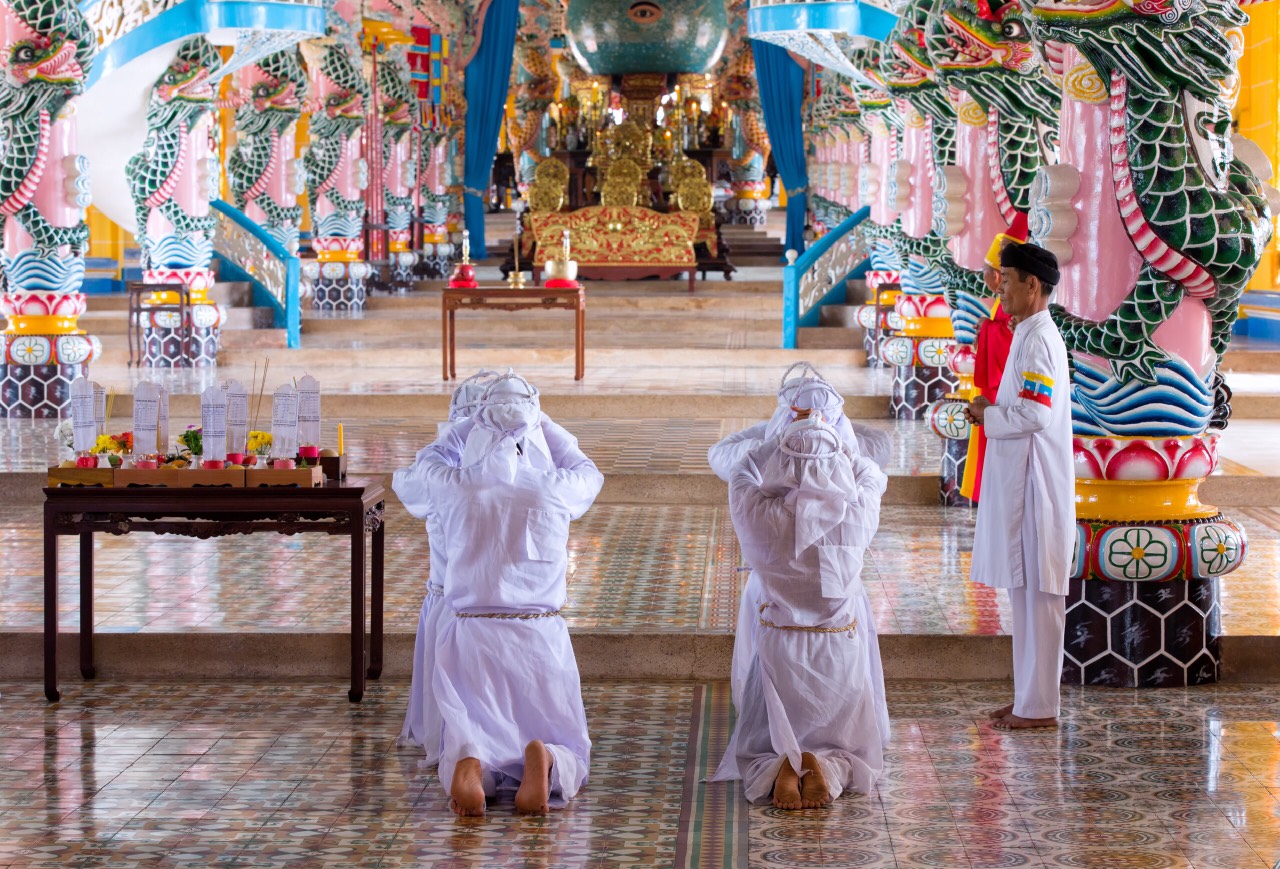
The official name of the Caodaism religion is: Đại Đạo Tam Kỳ Phổ Độ, which means in modern appellation, “The Third Universal Era of Divine Salvation of The Great Way.”
For the advent of Caodaism, grandiose celebrations were held from November 18 to 20, 1926.
After two months the new religion had more than 2,000 followers. The philosophy quickly became an important religion, mainly in the Mekong Delta, in the south of Vietnam, but also in the center.
The new religion had considerable importance on the spiritual level, but also on the political and even military level.
Ngô Van Chiêu wishing to concentrate on a spiritual life rather than political activities, renounced the status of pontiff, the first “pope” of Caodaism was Lê Văn Trung.
Initially, Caodaistic dignitaries developed strained relations with the colonial administration before allying themselves with France to fight the Việt Minh. This was perceived by some as a “pact with the devil.”
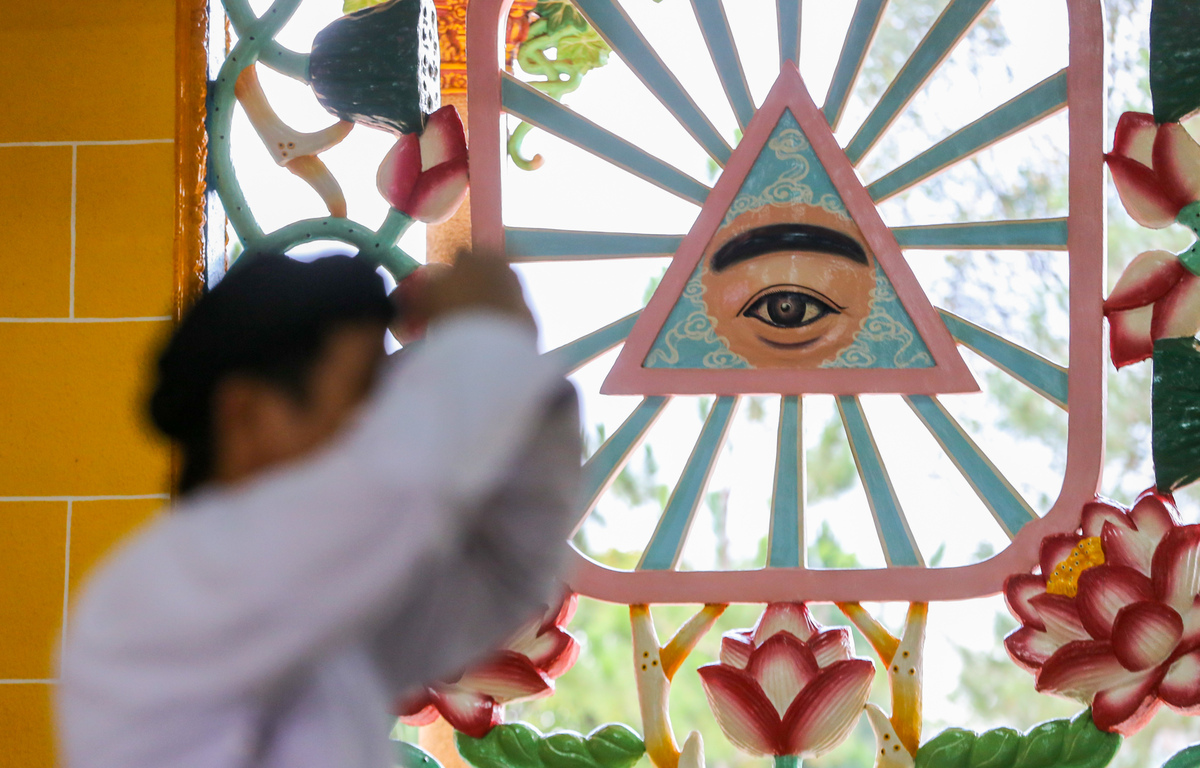 The Darlan-Kato treaty (July 29, 1941) allowed Japanese soldiers to occupy Indochina. In this context, Caodaism’s connections with the Japanese authorities did not go unnoticed.
The Darlan-Kato treaty (July 29, 1941) allowed Japanese soldiers to occupy Indochina. In this context, Caodaism’s connections with the Japanese authorities did not go unnoticed.
Trần Quang Vinh, the new leader of the movement, allied himself with Tokyo and formed a pro-Japanese Caodist army that would participate in the anti-French coup of March 9, 1945.
La défaite du Japon en août 1945 incite Trần Quang Vinh à collaborer avec le parti communiste et anticolonialiste Viêt Minh, dirigé par Hồ Chí Minh.
Cao Dai Temple in Viet Nam
In Tây Ninh – 85 km from the center of Saï Gon.
Started in 1927, it will be inaugurated in 1955, after several years of construction due to delays caused by political and financial problems.
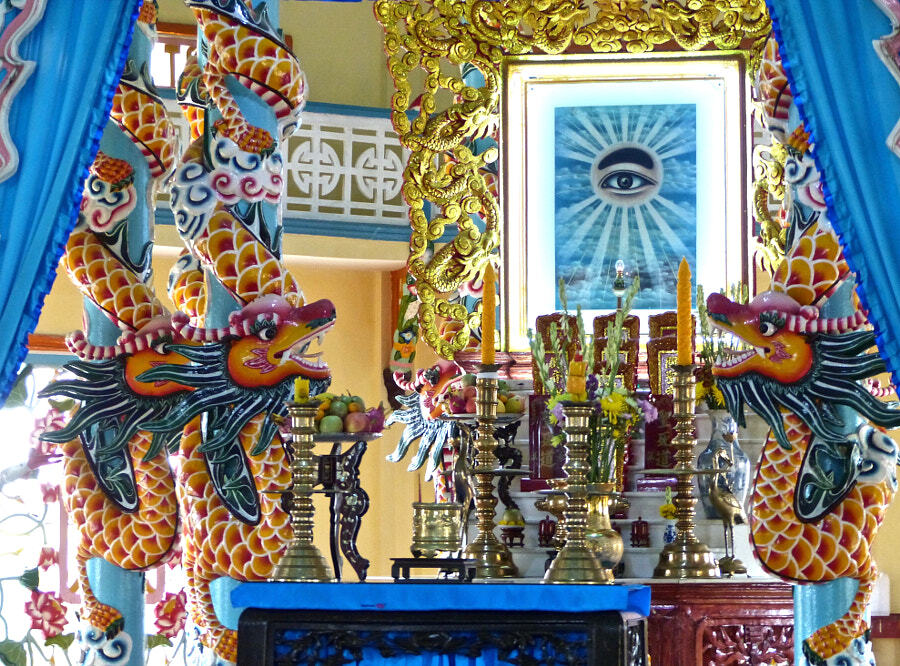 The whole complex occupies an area of 100 hectares, it is surrounded by a fence that protects the complex with 12 gates.
The whole complex occupies an area of 100 hectares, it is surrounded by a fence that protects the complex with 12 gates.
This colorful temple has an architecture made of subtle Asian and European mixes.
The immense cathedral of Tây Ninh is equipped with bell towers and a dome of catholic inspiration but of Sino-Vietnamese style.
The interior of the Cao Dai temple is decorated with 18 columns painted in pink or are screwed sculptures of dragons and snakes.
The columns divide the central part of the temple into 9 parts, representing the nine regions that make up the Mekong Delta but also the 9 steps of the Caodaists to reach the heavens.
The ceilings are painted in blue, it is a representation of the sky and 3072 stars.
The divine eye that sees everything is present everywhere and seems to watch the faithful.
At the bottom of the temple is the main altar, there is a huge blue ball of the world, as well as the divine Eye that sees everything.
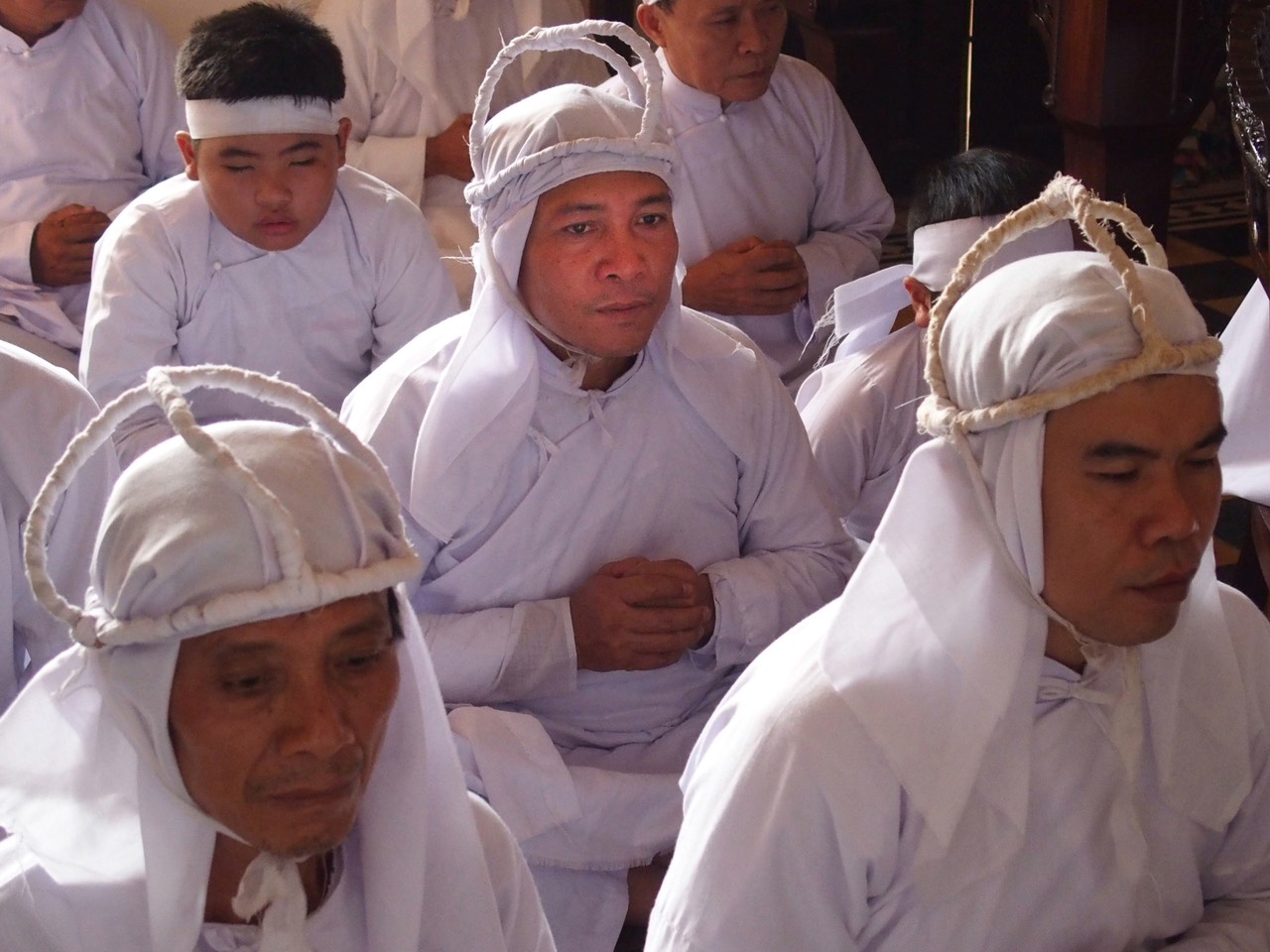
If the exterior has 12 doors, the temple has only 6.
The main door, called the pure heart, is reserved for the monks. On the sides, there is a door for women (on the left) and a door for men (on the right).
The faithful and the monks who are inside the temple wear colored tunics, colors revealing their hierarchy within the religious institution. The three branches of Caodaism are thus represented.
At the top of the hierarchy there is a virtual sovereign pontiff (Giao Tong) and a real pope, Hô Phap, Guardian of the Law.
They are assisted by dignitaries belonging to the Confucian, Buddhist and Taoist branches, respectively dressed in red, saffron and sky blue.
The female dignitaries are dressed in white dresses with hoods.
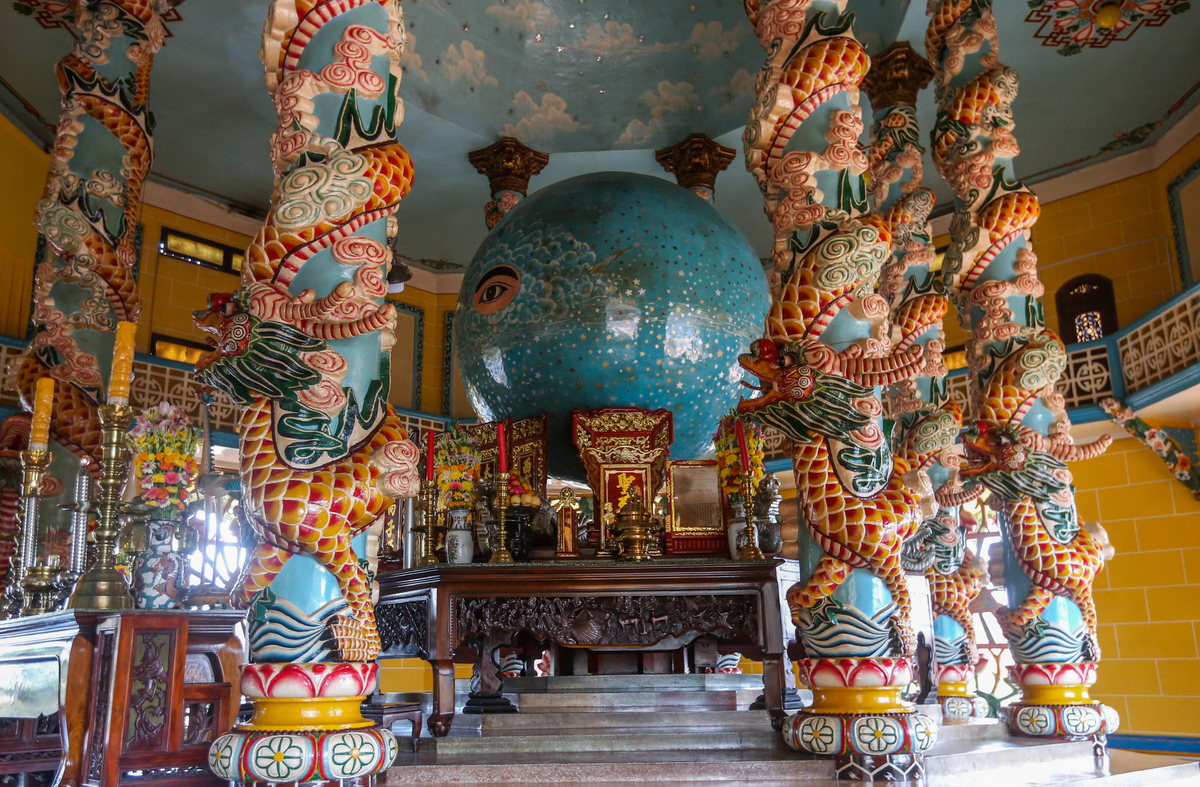 Les prêtres portent des mitres iraniennes.
Les prêtres portent des mitres iraniennes.
Women have the same status as men and can hold the same religious positions.
Tây Ninh is a city located at three hours of road of Hô-Chi-Minh-Ville and at 1h 30 of the tunnels of Cu Chi.
It is famous for its large Caodaïste temple which attracts many visitors and pilgrims each year.
Tourists (men and women) must only use the right door.
The religious ceremony lasts 45 minutes, it takes place every day of the week and 4 times a day at 06h00, 12h00, 18h00 and midnight.
Most tourists come to the midday mass.
You will need to remove your shoes before entering and do not speak during the mass.
You might also like:
